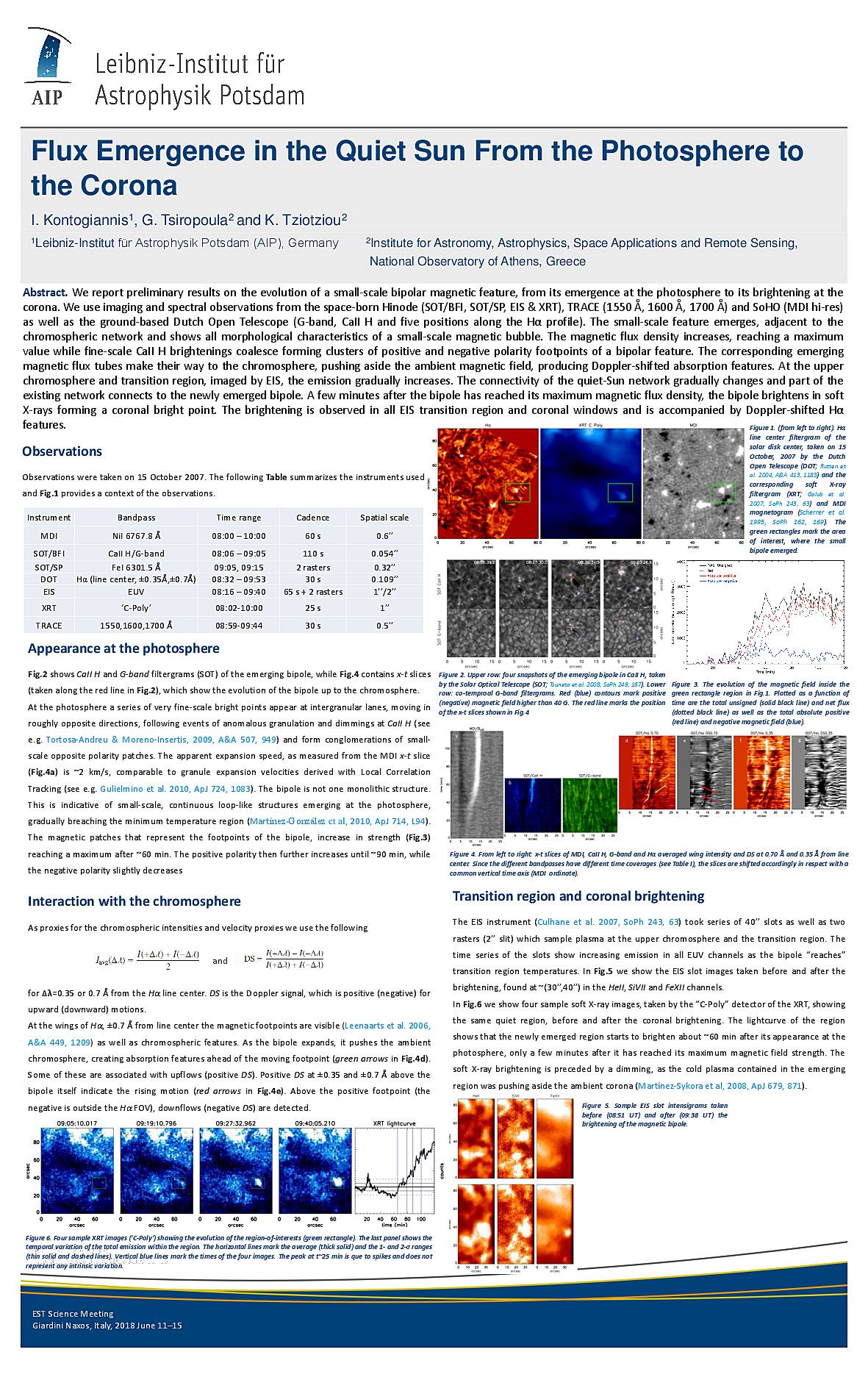Affiliation
Leibniz-Institut für Astrophysik Potsdam (AIP), Germany
Main category
Natural Sciences (Astrophysics and Astrononmy)
Abstract
We report preliminary results on the evolution of a small-scale bipolar magnetic feature, from its emergence at the photosphere to its brightening at the corona. We use imaging and spectral observations from the space-born Hinode (SOT/BFI, SOT/SP, EIS & XRT), TRACE (1550 Å, 1600 Å, 1700 Å) and SoHO (MDI hi-res) as well as the ground-based Dutch Open Telescope (G-band, CaII H and five positions along the Hα profile). The small-scale feature emerges, adjacent to the
chromospheric network and shows all morphological characteristics of a small-scale magnetic bubble. The magnetic flux density increases, reaching a maximum value while fine-scale CaII H brightenings coalesce forming clusters of positive and negative polarity footpoints of a bipolar feature. The corresponding emerging magnetic flux tubes make their way to the chromosphere, pushing aside the ambient magnetic field, producing Doppler-shifted absorption features. At the upper chromosphere and transition region, imaged by EIS, the emission gradually increases. The connectivity of the quiet-Sun network gradually changes and part of the existing network connects to the newly emerged bipole. A few minutes after the bipole has reached its maximum magnetic flux density, the bipole brightens in soft X-rays forming a coronal bright point. The brightening is observed in all EIS transition region and coronal windows and is accompanied by Doppler-shifted Hα
features.
Do you have problems viewing the pdf-file? Download poster
here
If the poster contains inappropriate content, please
report the poster. You will be redirected to the landing page.
